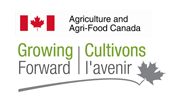Grazing Response Index
| Completed: | 2013 |
Project Title:
Grazing Response Index
Researchers:
Kerry Laforge kerry.laforge@agr.gc.ca
Kerry Laforge, Mae Elsinger, Bill Bristol and Cameron Kayter (Agriculture and Agri-Food Canada); Wendy Gardener, Ph.D., Vanessa Volpatti and Mahesh Khadka (Thompson Rivers University)
Healthy rangelands provide sustainable grazing for domestic livestock and supply many environmental, economic and social benefits. Rangeland managers make landscape-level decisions daily that affect rangeland health and productivity. For example, they must estimate how much forage can be removed, how often to graze the rangeland and how much recovery time it receives. But are these decisions improving or maintaining the resource? To answer this question, land managers need monitoring tools that offer a better understanding about the plants and how the rangeland system responds to grazing. Provided in a timely fashion, this information can lead to management decisions that positively and proactively influence forage production and range health.
The intent of any monitoring system is to maintain or improve the resource. While there are several monitoring methods available, the Grazing Response Index (GRI) is a beneficial short-term monitoring tool that offers a simple and effective means of evaluating the impacts of livestock grazing. The GRI provides a comprehensive evaluation of the effects of the current season’s grazing management and can be used to make rangeland management decisions for the following year.
The overall GRI rating of an individual pasture is the sum of the frequency, intensity and opportunity index values. This value represents the expected response of the plants to the current grazing management. A positive overall value indicates the management is beneficial to plant health, structure and vigour. A negative value indicates that management is detrimental to plant health if continued over the long term. A zero rating is neutral.
To determine the effectiveness of the grazing response index (GRI) in Western Canadian conditions.
${pageBreak}
What They Did:The effectiveness of the GRI was determined by comparing the responses of three key forage species (blue bunch wheatgrass, rough fescue, and pine grass) to various levels of clipping: clipped once at 40% or 70% or clipped three times at 40% or 70% removal of biomass. Forages were evaluated for regrowth, biomass, tiller count and canopy height. Plants were then scored using the GRI method and results were compared.
What They Learned:Results varied by species: bluebunch wheatgrass was impacted greater by intensity of clipping rather than frequency, rough fescue showed interactions between frequency and intensity while pinegrass results were variable. Though results varied by species, the GRI scoring for each species response was considered appropriate though it was conservative in its scoring of the more severe treatments.
What It Means:Management with a short term assessment tool like the GRI in conjunction with the long term assessments will give producers a tool that can be used every growing season to track short term changes in vegetation. The GRI breaks down the three main principles of plant growth (frequency, intensity and opportunity) to a simplistic form that still remains effective. Using this tool would allow producers to manage for more than just stocking rates and utilization but for duration in a pasture and even climatic conditions.
AAFC developed a GRI factsheet for ranchers and forage/pasture professionals in Western Canada. The 4-page factsheet discusses the strengths of GRI, explaining how to use the tool and interpret the results. A 2-page insert walks the reader through an example GRI assessment and includes a blank GRI assessment worksheet: http://publications.gc.ca/collections/collection_2014/aac-aafc/A59-22-2014-eng.pdf







